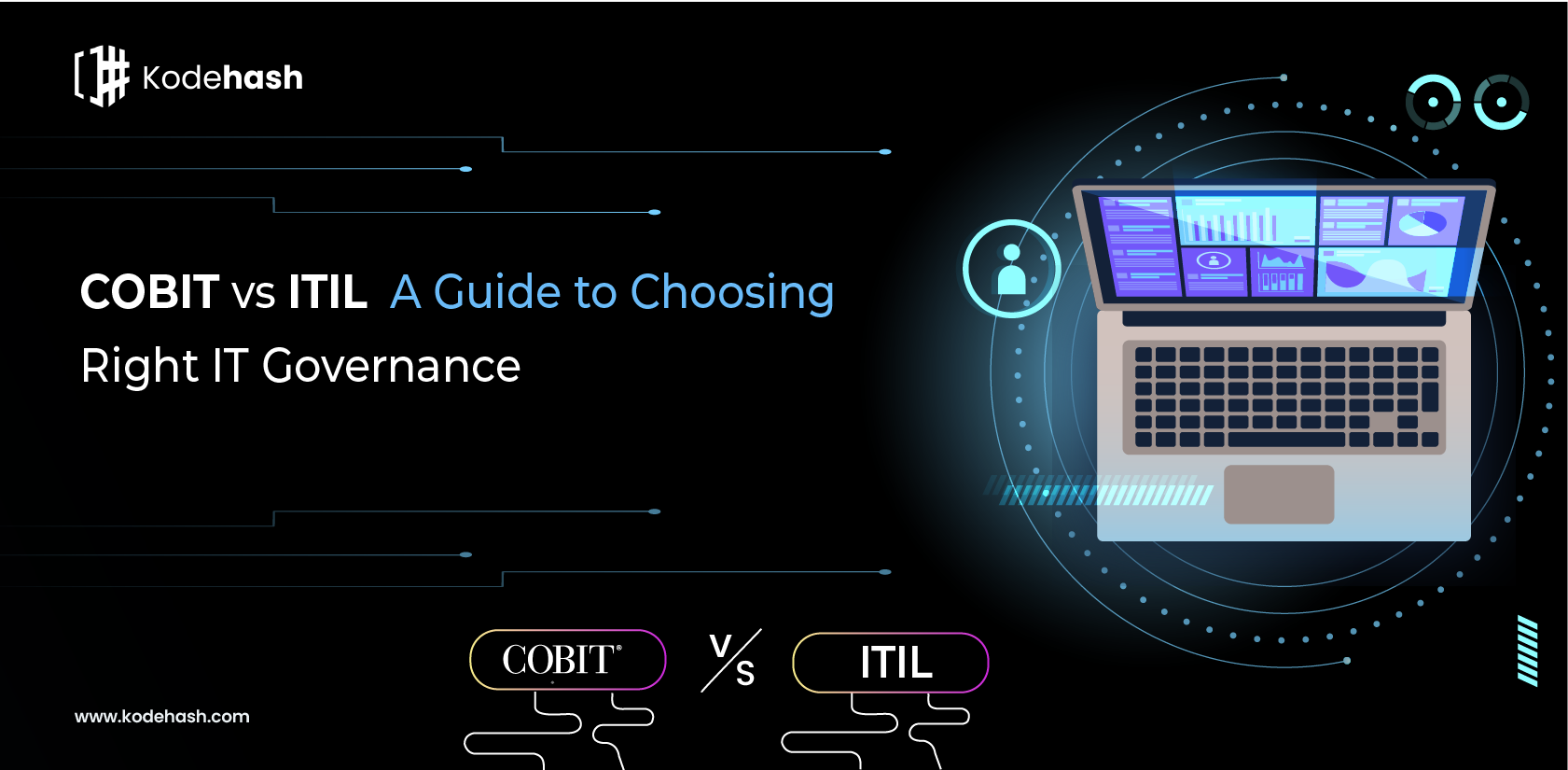What to Choose Between COBIT and ITIL for IT Governance Framework?

To be at the forefront of technology, businesses must understand the significance of the internet and data. To achieve stability and success within the business, organizations must optimise their IT resources through Information Technology Service Management ITSM (ITSM). Among various kinds of frameworks, two of the most popular and globally accepted frameworks for ITSM include COBIT and ITIL. ITIL is mostly utilized to manage the IT services throughout their lifecycle keeping user-centric approach in mind while COBIT is focused on the principles. When utilized together, these frameworks offer assistance for the effective management of IT services.
To make the right decision out of the COBIT vs ITIL debate, below we have mentioned the key differences between the two frameworks so that you can choose the right one.
What is COBIT
Control Objectives for Information and Related Technology or COBIT is an IT governance framework helping all size organizations in developing, managing, and deploying their IT strategies. COBIT which was introduced in 1996 is deployed to minimize various business risks as it has all the resources required to create, track, and manage its implementation while reducing the overall costs. By deploying COBIT, businesses can ensure the reliability of information systems, which is crucial for all.
COBIT provides a proper oversight and structure to the IT functioning while following all the guidelines.
COBIT: Core Components
- Frameworks
- Control Objectives
- Maturity Models
- Process Descriptions
- Management Guidelines
What is ITIL
Information Technology Infrastructure Library or ITIL consists of a series of processes that help streamline the company’s IT services across the entire lifecycle. ITIL which was designed by AXELOS is the blend of practices and strategies offering guidance in building, delivering, and organising enterprise IT services. By deploying ITIL, all size businesses can manage IT configuration components in a centralized knowledge base which eventually reduces costs and improves decision making.
ITIL: Five Components
- Service Strategy – Includes understanding business’ objectives and customer requirements.
- Service Design – Planning regarding accomplishing business objectives’ through design.
- Service Transition – It consists of replacing IT services with new services
- Service Operation – It consists of delivering, managing, and supporting IT services
- Continuous Service Improvement- Revamping IT services/delivery with time.
COBIT vs ITIL: Difference between COBIT and ITIL
For all the businesses desiring to go with the ITSM Implementation, the most important question arises is, which framework should be used? In the COBIT vs ITIL debate, one thing is clear that both are undeniably the greatest tools and can be used for ITSM. However, COBIT consists of a set of practices for high-end management to know the ways people should approach their IT enterprise. On the other hand, ITIL acts as the framework showing ways to organize and maintain IT employees’ daily processes.
Let’s have a look at the below table to get a detailed comparison between these two platforms.
|
COBIT |
ITL |
|
|
|
|
|
|
|
|
COBIT vs ITIL: Scope
COBIT is used by companies to lower the overall governance costs and is used to manage risks and maintain privacy by creating a standardised structure for all the ongoing IT processes within the company. ITIL is used to enhance the overall lifecycle of their product, beginning from its inception till the point it reaches the customer.
COBIT is integrated to assign duties and accomplish objectives to different executives and team members in the company. ITIL is used to particularly cover IT service management (ITSM) instead of the integration of IT with the rest of the company unlike COBIT.
Read Also: How To Build A Chatbot?
COBIT vs ITIL: Which To Choose?
When it comes to making the final decision between COBIT vs ITIL, it’s obvious that both of these frameworks have one common objective, i.e. to make IT efficient and stable. Both frameworks have their own advantages and disadvantages and thus must be integrated based on your business needs. COBIT provides a framework for IT governance while ITIL consists of a framework for IT service management.
By using the combination of these frameworks, businesses can achieve a comprehensive approach to IT governance and management along with addressing their unique business needs.
Explore the insights of COBIT and ITIL to tailor your IT governance strategy. Embrace the framework that aligns seamlessly with your organisation’s goals, and propel your business towards heightened success in the digital era by connecting with the experts at Kodehash Technologies. We will deploy the right framework keeping in mind the strategic goals of the business.
Recent Blogs
Subscribe:
Subscribe for the newsletter and receive email notification of every future post.




